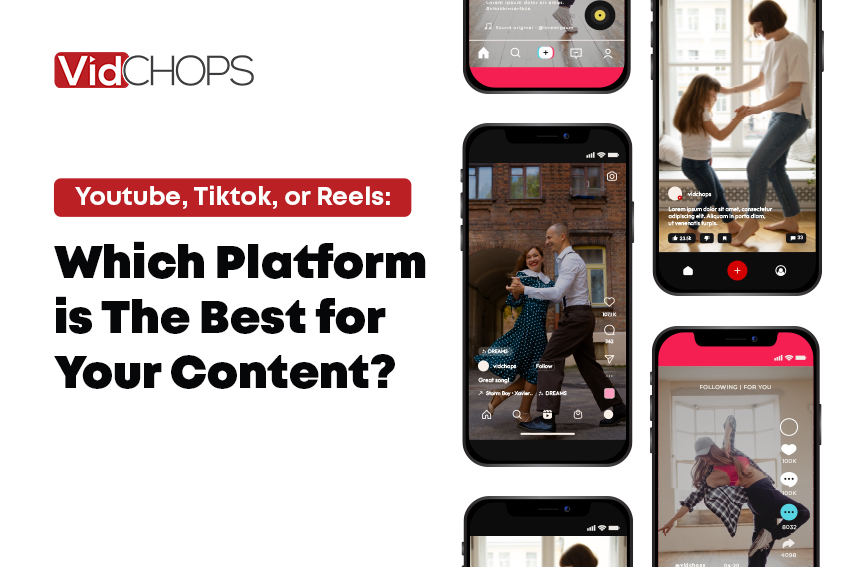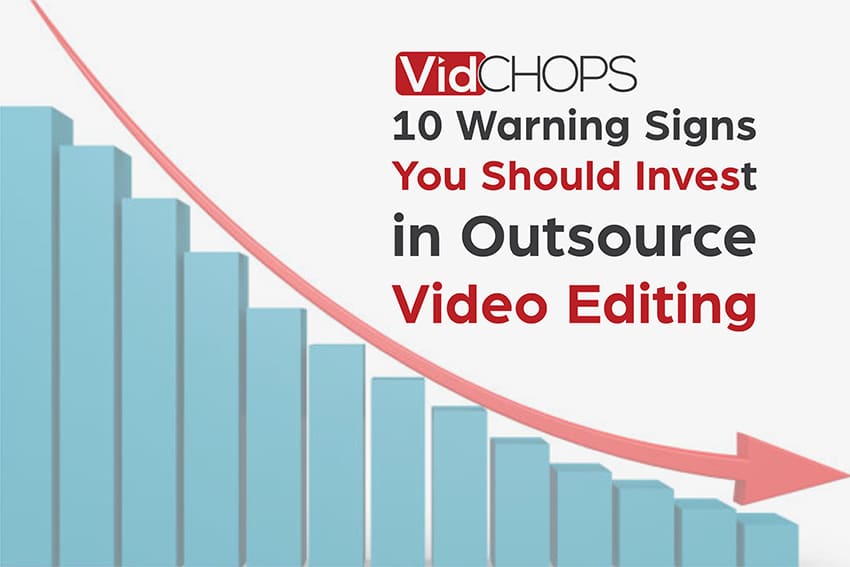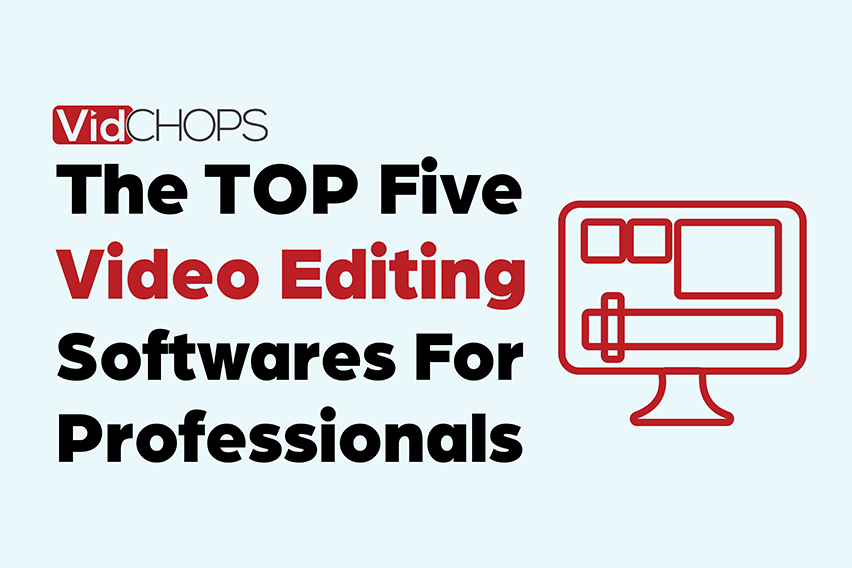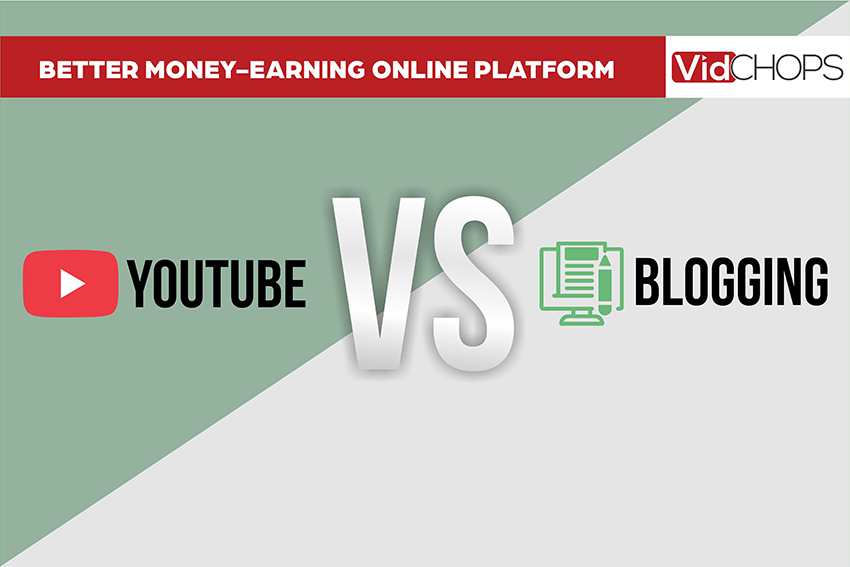How Top Video Creators Turn Simple Views Into 7-Figure Businesses
We break it all down on The Video Creatr Show, click the link below.
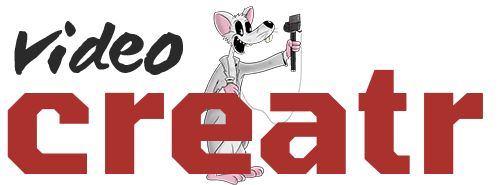
Today’s content creators have a plethora of social media outlets from which to choose when disseminating their work. There are several different platforms available to producers, but three of the most popular are YouTube, TikTok, and Instagram Reels. While YouTube has been a mainstay in the industry for over a decade and is well-known for its long-form video, newer competitors like TikTok and Instagram Reels have seen explosive growth, especially among the younger audience.
To assist you to choose the best platform for your needs, we’ll examine each in detail below and highlight both its strengths and weaknesses. No matter how long you’ve been making content or how much experience you have, you need to know the ins and outs of each platform before you commit your time and energy there.
Read on to discover which platform is ideal for you and why adopting Vidchops‘ video editing services will take your content production to the next level. A specialized video editor can help your content stand out from the crowd for a low monthly charge with our subscription based video editing service designed to help content creators.
YouTube

Advantages:
1. Wide reach and user base
Being the second-largest search engine, YouTube offers creators a fantastic platform to showcase their work to a broad audience. With more than 2 billion active monthly users, YouTube has an unmatched audience reach. The platform is a great resource for individuals who create material with a worldwide emphasis because it is available in more than a hundred different countries.
More viewers will find your videos thanks to YouTube’s recommendations and search algorithms. High-quality, engaging content may be seen by more people since the algorithm prioritizes content that keeps users interested for longer periods. For new content creators hoping to expand their audience, this might be quite helpful.
2. Variety of video file formats and lengths
YouTube is a perfect platform for documentaries, vlogs, and educational videos due to its limitless duration. Due to this versatility, producers may experiment with several methods of video creation to see which ones suit their content the best.
YouTube allows the playback of a wide variety of video formats, including 360-degree movies and virtual reality content. You may experiment with different sorts of material this way and provide your viewers with a deeper experience.
3. Opportunities to earn money
YouTube offers producers several ways to make money from their videos. Although the majority of network revenue comes from adverts, there are other ways. One more opportunity for producers to profit from their videos is through the YouTube Partner Program. Creators earn a portion of the advertising revenue through the YouTube Partner Program.
However, only creators who fulfill requirements, such as accruing 1,000 subscribers and 4,000 watch hours in the 12 months prior, are qualified to take part in the program. When their movies have been greenlit, producers might potentially earn money through commercials.
4. Engagement and community-building
Creators may connect with their audiences and cultivate a dedicated following using YouTube’s comment section and other community tools. Building trust and a dedicated following requires constant interaction with your audience.
Creators can engage with their audiences beyond the comment section by using community tools like surveys, live chats, and community posts. You can utilize these functions to advertise new materials, hold Q&A sessions, and more.
Disadvantages:
1. Intense competition
On YouTube, where millions of videos are published every day, it could be tough to stand out. Building a loyal fan base requires effort and time, and to keep readers interested, you need to consistently produce high-caliber content.
Due to the platform’s established artists as well as its recommendation algorithm, it could be difficult for new creators to get traction. New producers may find it challenging to succeed since the algorithm favors content that is already well-liked.
2. Strict monetization policies
YouTube’s monetization restrictions can be stringent, and producers’ compliance is required for maximum revenue. Content creators must adhere to the platform’s criteria for monetizable material or risk having their films demonetized or removed.
Making a living off of YouTube ad money alone, especially as a new artist, can be difficult. Creators need both a large audience and a steady flow of views to make a living wage.
3. Risk of copyright infringement and content strikes
YouTube has stringent copyright policies, so content makers need to be wary of using others’ work without permission. Copyright strikes or legal action may come from the unauthorized use of copyrighted materials.
Channel termination or restriction may occur after repeated content strikes. This might be disastrous for YouTubers who depend on the website as their main source of income. By ensuring they have the right permissions before including any music or other protected property in their films, creators may avoid this. Instead, they might utilize YouTube’s Content ID system, which identifies videos that may contain illegal content.
4. High-quality YouTube video requires a considerable time and energy investment to produce.
Video producers must set aside time for planning, recording, and editing their works in addition to shelling out cash for pricey supplies like cameras, microphones, and lighting. Although there may be big financial advantages, it’s important to understand the enormous effort required to produce excellent content.
5. It is challenging to make a respectable living without amassing a huge audience
YouTube has stringent requirements for creators to complete before their material may be monetized. Channels need 1,000 subscribers and 4,000 view hours in the previous 12 months to be considered for monetization. Even if you achieve all of these requirements, it may still be difficult to rely on YouTube ad money alone to support yourself and your family.
A strong fan base is essential, as is the adoption of alternative methods of monetization including advertising, merchandising, and crowdfunding if authors want to make a living wage. It takes hard work and persistence for many creators to gain a dedicated fan base and financial success through their work.
In conclusion, YouTube is a great option for those who want to share their work with an international audience. You may expand your reach and make connections with people all around the world thanks to the platform’s large user base and flexible nature. Yet, because of the high levels of competition and often stringent monetization restrictions, consistently producing high-quality content is essential for success on the network.
TikTok

The benefits of using TikTok
1. A High-Interest Platform
To keep users interested, TikTok’s algorithm recommends content depending on user interactions. This increases the likelihood that more people will view your videos, which improves your chances of standing out from the crowd and getting followers.
2. Strong Community
TikTok boasts a dedicated community of users that are eager to provide feedback to video makers and spread the app’s popularity. Building a community of people who share a passion for your work may be an effective way to gain devoted fans.
3. Simple to Use
TikTok’s user-friendly interface enables quick movie creation and widespread dissemination. The website also provides several video editing tools and effects to help its users make more interesting and unique videos.
4. Participates in popular online challenges
Your material may go viral and reach a large audience if you use TikTok’s well-liked challenges and trends. You can meet other creators and form partnerships for future works if you take part in popular challenges.
TikTok’s drawbacks:
1. Limited Monetization Options
It might be difficult to earn a livelihood entirely off of TikTok ad income due to the platform’s restricted monetization choices. Nonetheless, sponsors and product sales are viable revenue streams for producers.
2. Short-Form Format
TikTok’s 60-second video constraint may discourage certain content creators, especially those who want to make lengthier movies. For this reason, it may be difficult to effectively communicate a nuanced idea or explain a whole tale in a single video.
3. Content Restrictions
TikTok has strong content restrictions that might restrict the kind of videos that can be uploaded to the platform. Creators who want unfettered expression may find this discouraging.
4. Algorithm Changes
TikTok’s algorithm is always changing, making it challenging for producers to stay on top of industry developments and trends. Your video’s exposure and popularity may suffer as a result of this.
In conclusion, TikTok is a new social media network that has rapidly become extremely popular, especially among younger audiences. TikTok’s algorithm and emphasis on short films make it a great place to spread material virally and to a wide audience. However, there aren’t a lot of ways to make money off of it, and the format might not work for people who want to do lengthier pieces of work. It’s risky for content providers because the platform’s algorithm is unpredictable and the content management regulations might be stringent.
Reels
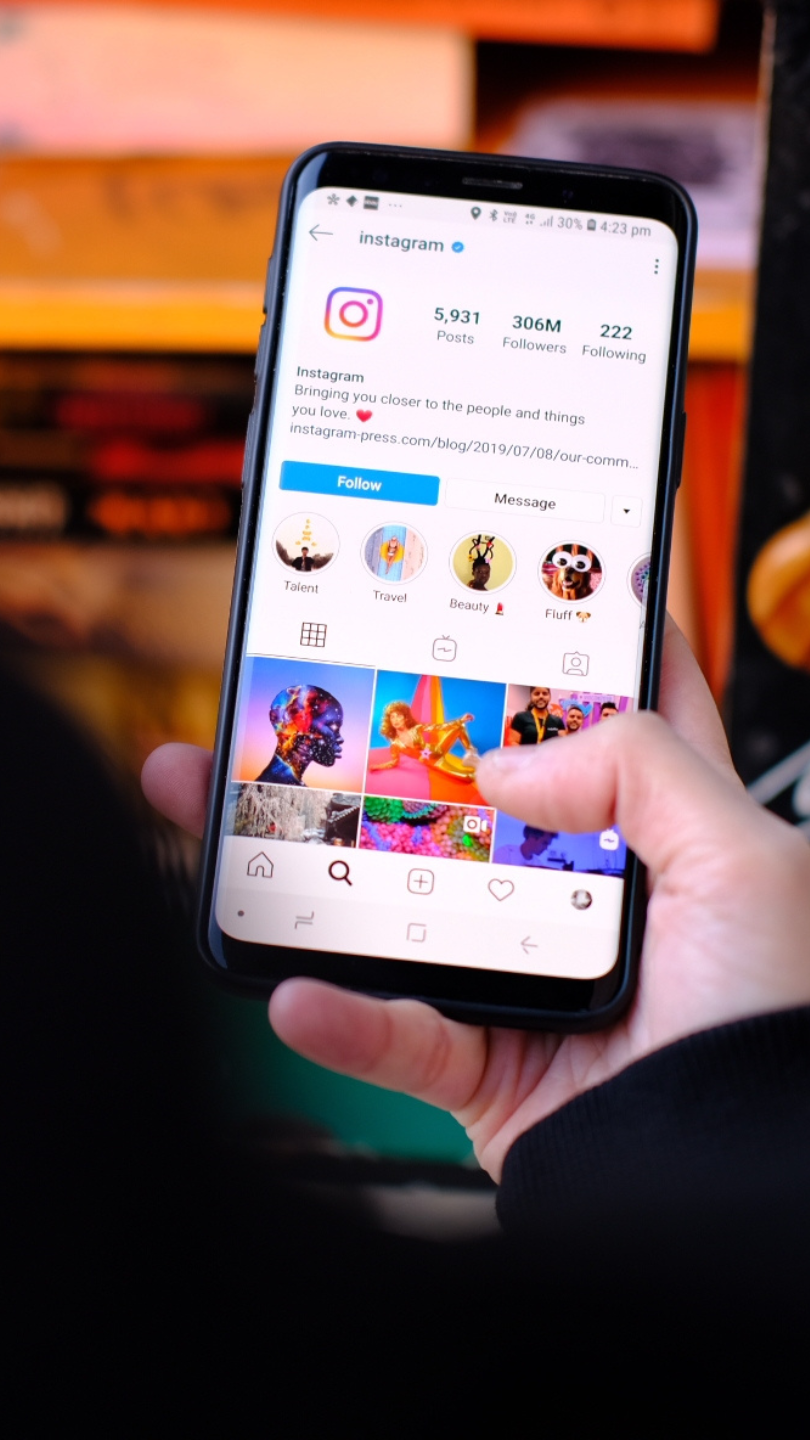
To compete with TikTok, Instagram has introduced a new feature called “Reels.” It is a platform where users may submit and share videos that are no longer than 60 seconds. Here, we’ll look more closely into Instagram Reels’ advantages and disadvantages.
Advantages of reels
1. Highly Engaging Platform
The algorithm behind Reels prioritizes material that is likely to keep users interested. This can increase your videos’ exposure and help you gain subscribers.
2. Integrated with Instagram
As Reels is a part of the Instagram app, you can use your current Instagram followers to help you get traction on Reels. This facilitates the growth of content artists’ audiences on Reels.
3. Simple to Use
Making a video on Reels couldn’t be easier. Videos may be customized with audio, text, and visual effects using the platform’s many editing features.
Reels’ Drawbacks
1. Limited Monetization Options
If you rely on Reels’ currently limited monetization possibilities, advertising revenue might not be enough to support a living. So, content creators who wish to generate money may need to look into other options, including advertising or selling merch.
2. Difficult to Gain a Following
Building an audience on Reels might be difficult because the platform is still in its infancy in comparison to others, like YouTube. It might take time and effort on the part of creators to gain a significant audience on the platform.
3. Very Brief Videos
The 60-second video cap on Reels might be a problem for some creators who wish to record and edit lengthier pieces. Artists may need to make adjustments to their work to make it compatible with the platform.
In summary, Reels is an intriguing service that integrates effectively with Instagram. It is simple to use and brimming with beneficial editing tools for artists of all hues. It might be difficult to gain a large following on the network, and revenue choices are restricted in comparison to more well-known alternatives. The site also has a limit of 60 seconds for video duration, which may be restrictive for some content producers.
Bottomline: Which Platform Is Best for Content Creators in 2023?
In conclusion, it’s essential to take into account the particular benefits and drawbacks of each platform when choosing which one to use as a content producer in 2023. While YouTube is a superior option for individuals who want to make long-form videos and reach a bigger audience, TikTok and Instagram Reels are excellent choices for short-form content. It is advised to test out all three platforms to see which one best suits your needs because the platform you select should ultimately be in line with your unique objectives and the kind of content you intend to produce. No matter the platform, content producers must give high-quality video production a priority since it can have a big influence on how viewers interact with their content. To do this, Vidchops can be extremely beneficial.
In conclusion, even though each platform—YouTube, TikTok, and Reels—has particular benefits and drawbacks, the success of all of them depends on producing audience-engaging content. You can ensure that your videos stand out from the competition with the help of Vidchops.
